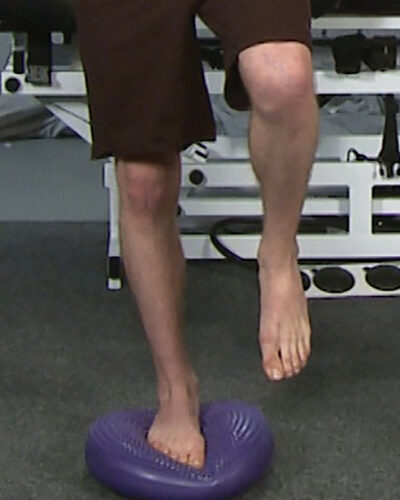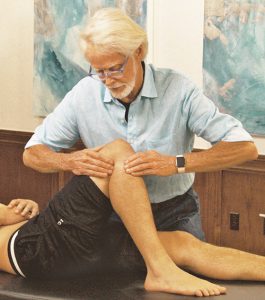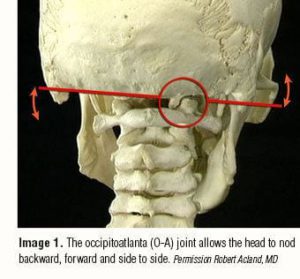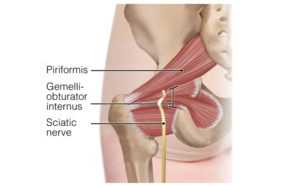Summary: Many therapists don not realize the necessity of achieving and maintaining a sense of balance. In this article, Dr. Dalton expounds on techniques to achieve the fundamentals.
Many therapists wrestle with maintaining proper body mechanics, but some have discovered a simple exercise tool that dramatically enhances their therapeutic skills. I have found that training five to ten minutes a day on a rocker board drastically improves my balance, core stability, strength, and endurance. Since balance is the critical building block necessary for making movement possible, any exercise to improve balance will reveal itself in the quality of your touch.
Customers consciously or unconsciously sense if a therapist is centered and balanced. In the absence of dynamic body balance, therapist movements often are awkward and jerky, known as the “jiggling hands” syndrome. Conversely, a body worker with a firm and steady touch exudes confidence as body weight travels evenly through the hands, torso, pelvis, and into the legs and feet to form a stable working foundation. Many of these principals are demonstrated in my Myoskeletal Alignment home study courses.
How Do Balance Boards Work?
When the body notices a change of surface, it self-corrects to achieve appropriate positions for that particular movement. These rapid changes rely on proprioceptors embedded in muscles, ligaments and joints to detect speed and degree of stretch. The proprioceptors in the body are highly refined motion sensors, and balance boards help train these sensors. While the square rocker board allows for one plane of instability, the round wobble board provides multiple planes for the most difficult workout. Rocker and wobble boards are fun and safe, but be sure to purchase one with a tactile surface on top and nonskid surface below, such as those displayed in the photos.

• Always stay within your functional threshold of balance – hold on to a wall or doorway as needed.
• Strive to sustain balance in order to train the body to move efficiently.
• Pull your navel toward your back without flattening lumbar curve to activate dynamic core stabilizers.
• Contract your gluteus maximus muscles with more weight shifted to your heels and slowly rock back and forth to improve posture and restore proper hip-extensor firing order.
No matter your age or ability, daily use of a balance board boosts overall fitness, core strength, and therapeutic performance. By improving body and spatial awareness through dynamic balance board exercises, the therapist uses less energy, which promotes greater core stability, mobility, agility and touch.
Erik Dalton, Ph.D., Certified Advanced Rolfer, founded the Freedom From Pain Institute and created Myoskeletal Alignment Techniques to share his passion for massage, Rolfing, and manipulative osteopathy. Visit the Erik Dalton website for information on workshops, conferences, and CE home study courses.
Home therapy as demonstrated in Motion Is Lotion course
On sale this week only!
Save 25% off the Essential MAT Assessments course!
NEW! Now available in the enhanced video USB format!
In the “Essential MAT Assessments” course, you’ll learn how to perform 130 essential orthopedic and osteopathic tests, as well as anatomic landmark exams to get to the bottom of your client’s pain complaint. Save 25% this week only! Offer expires Monday October 28th. Click the button below for more information and to purchase the course. Upon completion, you will receive 16CE hours and a certificate of completion to display in your office. BONUS: Order the home study version and get access to the eCourse for free!







